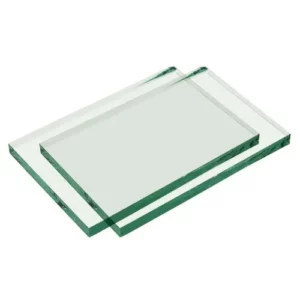Project Report For Toughened Glass Products
Introduction
Project report for Toughened Glass Products is as follows.
Toughened glass, also known as safety glass, tempered glass, or just plain old float glass, has been made force-resistant; as a result, it is six times harder to break than regular glass panes. Furthermore, because of internal stress patterns in the glass, if it does break, it will shatter into little, blunt cube-shaped fragments. In other words, nobody is harmed.
Mechanical properties of ordinary sheet glass are poor. Toughening sheet glass is thus required to create tough and strong glass products. Toughened glass is used in products such as automobile glasses, and household and industrial products because it has higher impact strength, vibration resistance, scratch resistance, and breakage resistance. Furthermore, toughened glasses provide protection during an accident because they break into many small pieces, causing minimal injury to the passengers.

Product & Application of Toughened Glass Products
Toughened glass is widely used in automobiles, building construction, furniture manufacturing, fancy and decorative articles, and so on. It’s also used in railways, airports, commercial buildings, agriculture, defense, greenhouse construction, and shipbuilding.
Project Report Sample On
Toughened Glass Products
Get Completely Custom Bankable Project Report
Manufacturing Processing of Toughened Glass Products
The plain glass sheets are processed as follows:
1. Glass loading for clearing.
2. Glasses are ground to specifications.
3. Glasses are cut to the required sizes.
4. Cleaning the glasses in the cleaning machine.
5. Glass edge polishing for improved structure
6. Glass polishing
7. Glasses toughening
To obtain high-quality end products, process parameters such as temperature and precision during cutting, ageing, and polishing are maintained in accordance with the desired end products.
Market Potential of Transformer Parts And Accessories
The global Toughened glass market is expected to grow at a compound annual growth rate (CAGR) of 4.3% from 2022 to 2030, with a value of USD 273.43 billion in 2021.
Expenses

Product Cost Breakup

Reveneue Vs Expenses

Market Trend

The increasing number of solar energy installations around the world, combined with the increasing penetration of glass architecture in residential and non-residential constructions, is expected to drive market growth during the forecast period. Factors such as the depletion of renewable resources, government regulations, rising environmental concerns, cost reductions for solar installations, technological advancements, and rising electricity demand are propelling solar capacity to increase, benefiting market growth.
The United States is critical to the global market due to rising construction activity in the country and rising demand for flat glass products in the automotive aftermarket. Despite the fact that the COVID-19 outbreak had a significant impact on the overall economy, construction activities were regarded as an essential service in many parts of the United States.
As a result, the country’s overall construction spending increased in 2020, which is a very positive development in the context of the pandemic. The primary end-user sector is the building and construction industry. Various architectural developments have increased product demand in recent years. In 2014, the largest application segment was automotive, with a revenue share of 40.3%.
The increasing use of tempered glass in the manufacture of backlights and windows is expected to drive demand during the forecast period. However, it has a competitive disadvantage when compared to laminated glass because it is more resistant to breakage and has greater pressure resistance capabilities. During the forecast period, the construction segment is expected to grow at a CAGR of 3.5% in terms of volume.
The product is used on both the exterior and interior of a structure to improve its aesthetic value and avoid fragility. Rising government spending on infrastructure development and rapid urbanisation in emerging economies such as India are expected to boost output.

